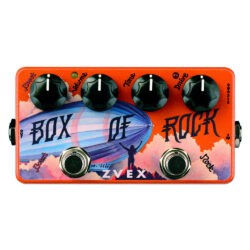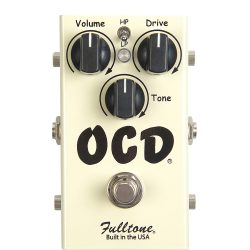Fairfield Circuitry Roger That // FM Modulator
€376.00
Unique signal degradation device that lives somewhere between distortion, fuzz, and the crackling white noise static of an old transistor radio.
The Fairfield Circuitry Roger That is a unique signal degradation device that (at least in terms of guitar) lives somewhere between distortion, fuzz, and the crackling white noise static of an old transistor radio. It can be tuned for subtle artifacts, extreme textures, or anything in between, and produces compelling results with virtually any input signal. Its Shift and Tune controls are mutually dependent and highly interactive – tune is like the dial on a radio receiver, sweeping through a wide spectrum of possible sounds (this can be controlled remotely via CV). Shift alters the accuracy of tracking for the incoming modulated signal. The extreme sensitivity and interactivity of these controls makes the Fairfield Roger That a playground for sonic deviance. In this demo video, we employ it on bass and guitar in rock band context, then we run through the control set to give you a taste of what this device is capable of.
Inspired by Roger Grant’s idea to mimic loss of fm radio signal through the use of a simplified fm modulator/demodulator scheme. As a young child, I would hide under the table when Roger came around. Later, when I first started in electronics, he gave me a bunch of parts, tools and bench equipment. Controls interfere with demodulation accuracy resulting in familiar yet unexpected signal degradation and noise. Decoherence at its finest.
Specifications
| Highlights | FM modulator/demodulator with drive and mix Controls: Tune, Shift, Drive, Wet, Dry Toggleswitch R: Tune range (1 normal, 2 extended) Toggleswitch F: Vocal filter 300Hz-3kHz (0 off, 1 on) CV input controls Tune Made in Québec, Canada |
| Bypass | True bypass |
| Power consumption | 9V DC center negative (power supply sold separately) 30 mA |
| Dimensions | H: 4,8 cm (incl. knobs) W: 11,9 cm D: 9,6 cm |
| Weight | 361 g. |











